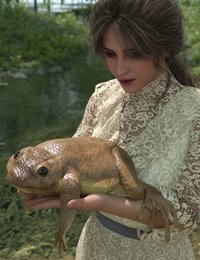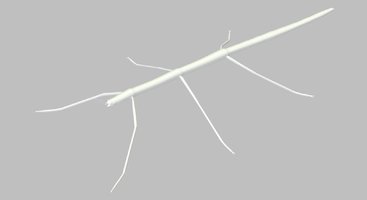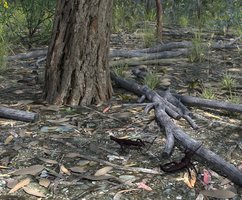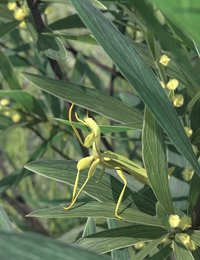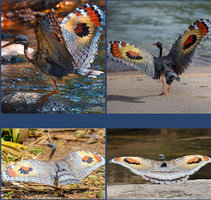-
Welcome to the Community Forums at HiveWire 3D! Please note that the user name you choose for our forum will be displayed to the public. Our store was closed as January 4, 2021. You can find HiveWire 3D and Lisa's Botanicals products, as well as many of our Contributing Artists, at Renderosity. This thread lists where many are now selling their products. Renderosity is generously putting products which were purchased at HiveWire 3D and are now sold at their store into customer accounts by gifting them. This is not an overnight process so please be patient, if you have already emailed them about this. If you have NOT emailed them, please see the 2nd post in this thread for instructions on what you need to do
You are using an out of date browser. It may not display this or other websites correctly.
You should upgrade or use an alternative browser.
You should upgrade or use an alternative browser.
Songbird Remix's Product Preview Thread
- Thread starter Ken Gilliland
- Start date
My Bullfrogs are about off their introductory sale so I thought I'd share what's in store for November. I will be releasing two sets of "Salamanders and Newts". While these creatures appear to be lizard-like they are actually amphibians and all of them excrete poison. In fact, the California Newt is as toxic as a puffer-fish. In any case, here's a sneak peek at the Fire Salamander (included in the base set)...

a few more renders....
Common Mudpuppies... It is a species of salamander in the family, Proteidae. It lives an entirely aquatic lifestyle in parts of the Great Lakes region and surrounding states in lakes, rivers, and ponds, in North America.

Eastern Hellbenders... This species of aquatic giant salamander is endemic to the eastern and central United States. They are present in a number of Eastern US states, from southern New York to northern Georgia, including parts of Ohio, Pennsylvania, Maryland, West Virginia, Virginia, Kentucky, Illinois, Indiana, Tennessee, North Carolina, South Carolina, Alabama, Mississippi, Arkansas, Missouri, and extending into Oklahoma and Kansas. The name 'hellbender' probably comes from the animal's odd look. One theory claims the hellbender was named by settlers who thought "it was a creature from hell where it's bent on returning."

Chinese Fire-belly Newts... It is endemic to subtropical forests in East-Central China and prefers to live in shallow, semi-aquatic environments such as abandoned paddies and ponds with dense vegetation. Like many amphibians, the Chinese fire belly newt hibernates.

Common Mudpuppies... It is a species of salamander in the family, Proteidae. It lives an entirely aquatic lifestyle in parts of the Great Lakes region and surrounding states in lakes, rivers, and ponds, in North America.
Eastern Hellbenders... This species of aquatic giant salamander is endemic to the eastern and central United States. They are present in a number of Eastern US states, from southern New York to northern Georgia, including parts of Ohio, Pennsylvania, Maryland, West Virginia, Virginia, Kentucky, Illinois, Indiana, Tennessee, North Carolina, South Carolina, Alabama, Mississippi, Arkansas, Missouri, and extending into Oklahoma and Kansas. The name 'hellbender' probably comes from the animal's odd look. One theory claims the hellbender was named by settlers who thought "it was a creature from hell where it's bent on returning."
Chinese Fire-belly Newts... It is endemic to subtropical forests in East-Central China and prefers to live in shallow, semi-aquatic environments such as abandoned paddies and ponds with dense vegetation. Like many amphibians, the Chinese fire belly newt hibernates.
Last edited:
Flint_Hawk
Dances with Bees
These are all amazing!
As my Salamanders and Newts are getting tested (for a November release), I've started working on my December project which will be another Nature's Wonders insect... the Phasmid (aka walking stick). I'm hoping I can tame the UVs enough to make some of the "walking leaf" varieties too. I think the only way to do that is to create 2 objs with different UVs for Poser and alternate UVS in DAZ Studio.
Attachments
I've finished (I think) all the morphs, but I'm still working on some UV edits and a conforming set of wings (for a couple species)... here's some of the Phasmid shapes/species:

The species I've selected are:
The species I've selected are:
- French stick insect
- Spanish walking stick
- Common or Indian stick insect
- Northern walking stick
- Black Beauty stick insect
- Giant Malayan Stick Insect
- Lord Howe Island stick insect or "Tree lobster"
- True leaf insect
- Jacobson's Leaf-insect
Here's a couple Iray Phasmid renders... the story with the Lord Howe Island 1918 image is interesting...
(from Wikipedia from some edits)
The Lord Howe Island stick insects (aka Tree Lobsters) were once very common on the Island, where they were used as bait in fishing. They were believed to have become extinct soon after the supply ship S.S. Makambo ran aground on the island in 1918, allowing black rats to become established. After 1920, no stick insects could be found. Also, the birds in the background, the Robust Silver-Eye (featured in my SBRM TEE2), also went extinct due to the rats.
That was until, in 1964, a team of climbers visiting Ball's Pyramid, a rocky sea stack 23km (14 mi) south-east of Lord Howe Island, discovered a dead Lord Howe Island stick insect. During subsequent years, climbers found a few more fresh carcasses, but expeditions to find live specimens were unsuccessful.
In 2001, Australian scientists David Priddel and Nicholas Carlile hypothesized that there was sufficient vegetation on the islet to support a population of the insects, and, with two assistants, travelled there to investigate further. They scaled 120 m of grassy, low-angled slope, but found only crickets. On their descent, the team discovered large insect droppings under a single Melaleuca shrub growing in a crevice approximately 100 m above the shoreline. They deduced that they would need to return after dark, when the insects are active, to have the best chance of finding living specimens. Carlile returned with local ranger Dean Hiscox and, with a camera and flashlights, scrambled back up the slopes. They discovered a small population of 24 insects living beneath the Melaleuca shrub amongst a substantial build-up of plant debris.
In 2003, a research team from New South Wales National Parks and Wildlife Service returned to Ball's Pyramid and collected two breeding pairs, one destined for a private breeder in Sydney and the other sent to the Melbourne Zoo. After initial difficulties, the insects were successfully bred in captivity in Melbourne. The ultimate goal was to produce a large population for reintroduction to Lord Howe Island, providing that a project to eradicate the invasive rats was successful. In 2006, the captive population of insects numbered about 50 individuals, with thousands of eggs still to hatch. In 2008, when Jane Goodall visited the zoo, the population had grown to 11,376 eggs and 700 individuals, 20 of which were soon after returned to a special habitat on Lord Howe Island. As of April 2012, the Melbourne Zoo had reportedly bred over 9,000 of the insects, including 1,000 adult insects, plus 20,000 eggs. In 2012, the Budapest Zoo was the first zoo in the world to reproduce it.
In 2014, an unauthorized climbing team sighted live stick insects near the summit of Ball's Pyramid, in a thicket of sedge plants rooted in very thin soils at an altitude of 500m, suggesting that the insect's range on the island is more widespread than previously thought, and that its food preferences are not limited to Melaleuca howeana.
By the beginning of 2016, Melbourne Zoo had hatched 13,000 eggs, and had also sent eggs to the Bristol Zoo in England, the San Diego Zoo in the United States, and the Toronto Zoo in Canada, to establish distinct insurance populations.
A 2017 study comparing DNA sequences of phasmids originating from Ball's Pyramid with those from museum specimens from Lord Howe Island showed that the Ball's Pyramid sequences differ from those of Lord Howe Island by a degree comparable to variation within the museum specimens, despite some morphological differences between the two groups. This confirms that the two populations represent the same species. The genome was found to be very large in size (over 4 Gb) and is probably hexaploid.
In 2018 it was announced that the CEO of the Lord Howe Island Board had approved a plan to exterminate the black rat population on Lord Howe Island to protect the island ecology and potentially reintroduce D. australis. As of 2023 plans are being made to reintroduce the insects to Blackburn Island, a smaller island offshore of Lord Howe Island, to test the potential for reintroduction to the larger island.
(from Wikipedia from some edits)
The Lord Howe Island stick insects (aka Tree Lobsters) were once very common on the Island, where they were used as bait in fishing. They were believed to have become extinct soon after the supply ship S.S. Makambo ran aground on the island in 1918, allowing black rats to become established. After 1920, no stick insects could be found. Also, the birds in the background, the Robust Silver-Eye (featured in my SBRM TEE2), also went extinct due to the rats.
That was until, in 1964, a team of climbers visiting Ball's Pyramid, a rocky sea stack 23km (14 mi) south-east of Lord Howe Island, discovered a dead Lord Howe Island stick insect. During subsequent years, climbers found a few more fresh carcasses, but expeditions to find live specimens were unsuccessful.
In 2001, Australian scientists David Priddel and Nicholas Carlile hypothesized that there was sufficient vegetation on the islet to support a population of the insects, and, with two assistants, travelled there to investigate further. They scaled 120 m of grassy, low-angled slope, but found only crickets. On their descent, the team discovered large insect droppings under a single Melaleuca shrub growing in a crevice approximately 100 m above the shoreline. They deduced that they would need to return after dark, when the insects are active, to have the best chance of finding living specimens. Carlile returned with local ranger Dean Hiscox and, with a camera and flashlights, scrambled back up the slopes. They discovered a small population of 24 insects living beneath the Melaleuca shrub amongst a substantial build-up of plant debris.
In 2003, a research team from New South Wales National Parks and Wildlife Service returned to Ball's Pyramid and collected two breeding pairs, one destined for a private breeder in Sydney and the other sent to the Melbourne Zoo. After initial difficulties, the insects were successfully bred in captivity in Melbourne. The ultimate goal was to produce a large population for reintroduction to Lord Howe Island, providing that a project to eradicate the invasive rats was successful. In 2006, the captive population of insects numbered about 50 individuals, with thousands of eggs still to hatch. In 2008, when Jane Goodall visited the zoo, the population had grown to 11,376 eggs and 700 individuals, 20 of which were soon after returned to a special habitat on Lord Howe Island. As of April 2012, the Melbourne Zoo had reportedly bred over 9,000 of the insects, including 1,000 adult insects, plus 20,000 eggs. In 2012, the Budapest Zoo was the first zoo in the world to reproduce it.
In 2014, an unauthorized climbing team sighted live stick insects near the summit of Ball's Pyramid, in a thicket of sedge plants rooted in very thin soils at an altitude of 500m, suggesting that the insect's range on the island is more widespread than previously thought, and that its food preferences are not limited to Melaleuca howeana.
By the beginning of 2016, Melbourne Zoo had hatched 13,000 eggs, and had also sent eggs to the Bristol Zoo in England, the San Diego Zoo in the United States, and the Toronto Zoo in Canada, to establish distinct insurance populations.
A 2017 study comparing DNA sequences of phasmids originating from Ball's Pyramid with those from museum specimens from Lord Howe Island showed that the Ball's Pyramid sequences differ from those of Lord Howe Island by a degree comparable to variation within the museum specimens, despite some morphological differences between the two groups. This confirms that the two populations represent the same species. The genome was found to be very large in size (over 4 Gb) and is probably hexaploid.
In 2018 it was announced that the CEO of the Lord Howe Island Board had approved a plan to exterminate the black rat population on Lord Howe Island to protect the island ecology and potentially reintroduce D. australis. As of 2023 plans are being made to reintroduce the insects to Blackburn Island, a smaller island offshore of Lord Howe Island, to test the potential for reintroduction to the larger island.
Attachments
Here's the Northern (American) Walking Stick... (the plant its on is my Cephalanthus occidentalis from Big Cypress Habitat)

...and the Giant Stick insect...

I've never seen that bird before and had to look it up just to make sure it wasn't an AI creation. It's in my online bird bible, Cornell Labs "Birds of the World"... so it's definitely real and I'll add it to my to-do listAdmittedly you may already have these, but I don't remember seeing them. It's called the Sun Bittern.
Flint_Hawk
Dances with Bees
Actually, it does remind me of the Peacock Butterfly.
Just as butterfly do with that type of patterning, that bittern opens its wings to reveal two huge "eyes" which frightens off predators.
Here's my wip of my next model... I'm just about ready to start the rigging and cleaning up UV mapping on it.

Flint_Hawk
Dances with Bees
I'm looking forward to these.
Every Autumn for the past 35+ years a single Praying Mantis has landed on the back screen door here. They have been different sizes & different colors. This year there were 6 different ones. It's just an odd coincidence, but I always enjoy seeing them.
Every Autumn for the past 35+ years a single Praying Mantis has landed on the back screen door here. They have been different sizes & different colors. This year there were 6 different ones. It's just an odd coincidence, but I always enjoy seeing them.
I'm looking forward to these.
Every Autumn for the past 35+ years a single Praying Mantis has landed on the back screen door here. They have been different sizes & different colors. This year there were 6 different ones. It's just an odd coincidence, but I always enjoy seeing them.
I guess I'm going to have to reveal the dark truth about mantises I discovered when researching them for this project....
First, here's a photo I shot last week from our front porch:
A week ago, we noticed a mantis climbing up our front porch gingerbread and then on to the hummingbird feeder where it sat upside-down waiting. Thinking it was lost, I gently picked it up and moved it to a shrub in our garden.
Coincidentally, I was doing some mantis research a few days later thinking I might want to create it as my next model and discovered the dark truth... the mantis on the feeder wasn't lost... Preying Mantises will kill and eat hummingbirds. It was sitting there waiting for an unsuspecting hummingbird, waiting to pounce, grabbing the hummingbird by the head, and eating its brains.
I'll never look at preying mantises quite the same way again.
Flint_Hawk
Dances with Bees
I won't either. Yuck!
@Ken Gilliland The minute I read "On the hummingbird feeder" I knew where this was going.

